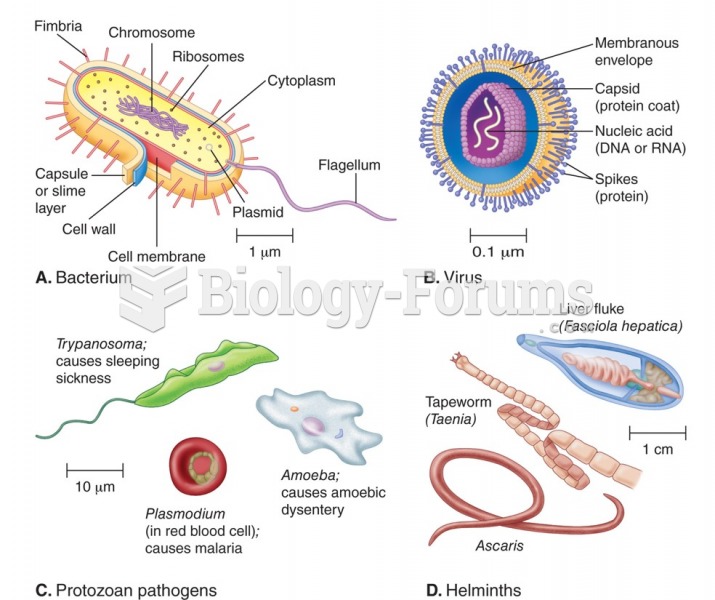|
|
|
The lipid bilayer is made of phospholipids. They are arranged in a double layer because one of their ends is attracted to water while the other is repelled by water.
Vital signs (blood pressure, temperature, pulse rate, respiration rate) should be taken before any drug administration. Patients should be informed not to use tobacco or caffeine at least 30 minutes before their appointment.
Astigmatism is the most common vision problem. It may accompany nearsightedness or farsightedness. It is usually caused by an irregularly shaped cornea, but sometimes it is the result of an irregularly shaped lens. Either type can be corrected by eyeglasses, contact lenses, or refractive surgery.
Coca-Cola originally used coca leaves and caffeine from the African kola nut. It was advertised as a therapeutic agent and "pickerupper." Eventually, its formulation was changed, and the coca leaves were removed because of the effects of regulation on cocaine-related products.
Thyroid conditions may make getting pregnant impossible.
 Types of pathogenic organisms: (a) bacterium, (b) virus, (c) protozoan pathogens, (d) multicellular ...
Types of pathogenic organisms: (a) bacterium, (b) virus, (c) protozoan pathogens, (d) multicellular ...
 The ability of a community to cope, adapt to, and mitigate the accelerating impact of climate change
The ability of a community to cope, adapt to, and mitigate the accelerating impact of climate change





